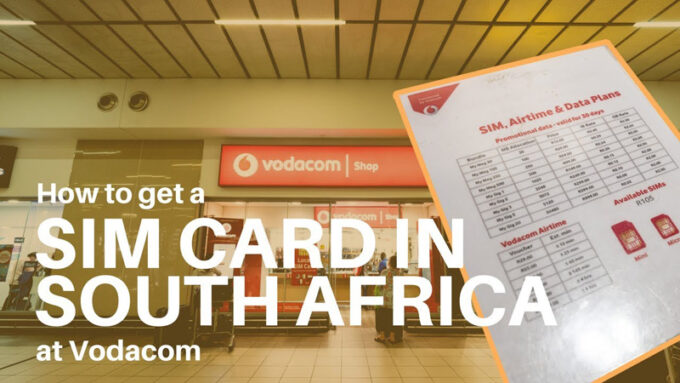One of the biggest challenges when travelling is staying connected. For me, it’s not all about being able to Facebook, Skype or Instagram while I’m on the road, but it’s more about looking up directions, calling Uber, and being able to call someone in case of emergencies (I.e. Airbnb Host, police, etc).
Since I travel a lot, I made the decision to buy my phone outright – that way I don’t have to deal with the hassle that is unlocking a phone, voiding any warranties, etc. That allows me the flexibility of purchasing a local SIM card and staying connected as I go.
I’ve been travelling quite a bit and South Africa is a destination where I do not want to travelling without being able to contact people in case of emergencies. Unlike Canada with its convoluted oligopoly in the telecom industry, SIM cards and data/cellular plans in South Africa (and Ghana as well) are very inexpensive so that’s not even an excuse! I enjoy being able to access social media, emails and my family on the go, and topping up my data and airtime as I go. I enjoy having the flexibility of converting my airtime to data because I rarely need to call anyone, and spend more time using up cellular data.
Which Company?
There are a number of different cell providers in South Africa (and Ghana), but the 2 that are most popular at Vodafone (Ghana)/Vodacom (South Africa) as well as MTN. When I lived in Ghana, I went with Vodafone and found the service to be quite good, and I was connected even in remote areas of the country.
For my trip in South Africa, I read that MTN had better connectivity than Vodacom, especially in rural areas. The bundles and prices are slightly better on MTN which is why I decided to go with it. In hindsight, I think I would have gone with Vodacom in the future. The MTN signal was consistently dropping when I was on a safari (While a friend of my mine, who had a Vodacom SIM had much better connectivity) and even when I am in the city, there are occasional signal drops, which I found surprising.

I’m not too sure about Vodacom, but I’ve found that the flexibility in converting airtime to data to be invaluable. I love the idea of not wasting any airtime as I can easily convert any amounts into data which I consume more than airtime.
Roaming?
Since I have an unlocked phone, and have taken out my Canadian SIM card before I even left the country, there was no roaming risk. My phone which was bought at the Apple Store is not programmed to a certain Canadian telecom provider so replacing it with the local one was the simplest process.
How does it Work?
You can purchase a SIM card from pretty much anywhere (I went to a local Checkers, the equivalent of No Frills in Canada) – the official stores or grocery stores. There are several providers to choose from. In both South Africa and Ghana, you needed to bring your passport and proof of residence (My hostel drafted up a letter stating that the hostel was my residence). They set you up in less than 5 minutes and you now have a local number. Note that you still need to purchase airtime (voice) and data, which can be purchased and topped up separately. They have several different bundles to choose from, but I’ve found buying airtime and converting it into data as you go tend to be the cheapest way. Plus, every time you top up your balance, you get bonus data for 1 day to 1 week.
It’s also important to know which kind of SIM card you need (micro or nano?) The iPhone 5S/6S use a nano but it’s easy to quickly look up the size you need. The good news is that both Vodacom and MTN anticipate the different card sizes so you can actually separate the “pieces” of the SIM card to get your desired size.
The SIM card costed anywhere from R2 – R3. That is CAD $0.20-$0.30 vs. The $5 that our local telecom companies make us pay.
